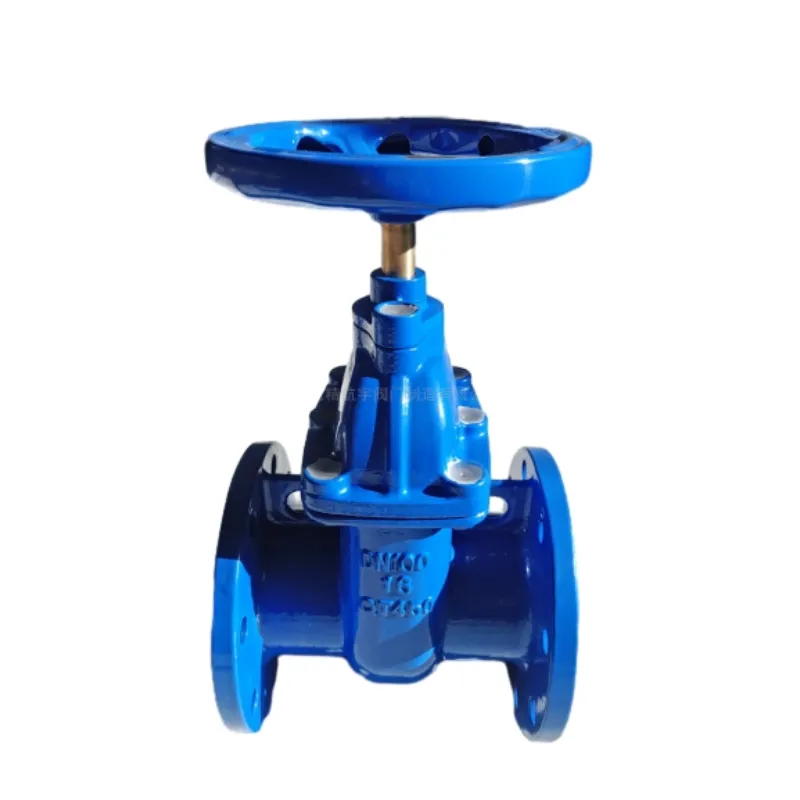Dec . 09, 2024 22:15 Back to list
Different Types of Butterfly Valve Seats Explained for Optimal Performance and Selection
Understanding Butterfly Valve Seat Types
Butterfly valves are essential components in various industrial applications, serving as regulators for fluid flow. Central to their function is the valve seat, which forms a critical barrier between the valve and the flow medium. The seat is crucial for ensuring tight sealing and maintaining pressure in pipelines. This article delves into the various types of butterfly valve seats, exploring their materials, designs, applications, and advantages.
What is a Butterfly Valve?
A butterfly valve is a quarter-turn rotational valve that uses a disc to control flow. The disc is mounted on a shaft, and when the shaft rotates, the disc opens or closes the flow path. Butterfly valves are widely utilized due to their compact design, low weight, and ability to perform well in large-diameter applications.
Importance of Valve Seats
The valve seat is the part of the valve that securely holds the disc in place when the valve is closed. The material and design of the seat significantly influence the valve's performance, sealing capabilities, and longevity. An effective seat minimizes leakage and withstands the pressure of the medium passing through the valve.
Types of Valve Seats
1. Soft Seats
Soft seats are typically made from elastomers, such as rubber or PTFE (Polytetrafluoroethylene). These materials provide an excellent seal against leakage, making them suitable for low to moderate pressure applications. Soft seats conform to the disc shape, allowing for a tight closure and enabling the valve to effectively shut off flow.
Advantages - Excellent sealing performance - Low torque requirements for operation - Cost-effective for general applications
Disadvantages - Limited resistance to high temperatures and pressures - Susceptible to wear and tear, especially in abrasive environments
2. Metal Seats
butterfly valve seat types

Metal seats are constructed from durable materials such as stainless steel, carbon steel, or other alloys. These seats are designed for applications involving higher temperatures, pressures, and abrasive or corrosive media. Metal seats maintain their shape and sealing capabilities under extreme conditions.
Advantages - High durability and longer lifespan - Resistant to high temperatures and pressures - Suitable for abrasive and corrosive environments
Disadvantages - Higher torque may be required to operate the valve - Potential for metal-to-metal sealing, leading to higher leakage rates in low-pressure applications
3. Composite Seats
Composite seats combine materials to leverage the advantages of both soft and metal seats. Typically, a soft elastomer is bonded to a metal backing, providing both sealing efficiency and durability. These seats can handle moderate temperatures and pressures while offering exceptional sealing capacities.
Advantages - Balanced performance with improved durability - Effective sealing in a wider range of applications - Lower maintenance costs compared to pure soft or metal seats
Disadvantages - More expensive due to the composite manufacturing process - Limited performance in extreme temperature or pressure conditions
Applications of Butterfly Valve Seat Types
The selection of a butterfly valve seat type depends on the specific application
- Water Treatment Soft seats are commonly used in water treatment plants where low-pressure conditions prevail. - Oil and Gas Metal seats are favored in oil and gas applications because they can withstand abrasive fluids and high pressures. - Chemical Processing Composite seats are often used in chemical processing industries where media may be corrosive, ensuring both durability and effective sealing.
Conclusion
Understanding the various types of butterfly valve seats is crucial for selecting the right valve for specific applications. Soft, metal, and composite seats each possess distinct characteristics that cater to specific needs regarding sealing performance and durability. By carefully considering the operating conditions and media involved, engineers and designers can optimize fluid control systems, enhancing efficiency and reliability across various industries. In a world of ever-evolving industrial demands, choosing the right butterfly valve seat plays a vital role in ensuring operational success.
-
Why Metric Trapezoidal Thread is Ideal for Precision Motion ControlNewsAug.05,2025
-
The Unique Properties of a Block of Granite for Industrial UseNewsAug.05,2025
-
The Role of Flanged Y Strainers in Preventing Pipeline ClogsNewsAug.05,2025
-
The Importance of Regular Calibration for Master Ring GagesNewsAug.05,2025
-
How a Cast Iron Surface Table Enhances Accuracy in ManufacturingNewsAug.05,2025
-
Comparing Different Check Valve Types for Optimal Flow ControlNewsAug.05,2025
Related PRODUCTS









